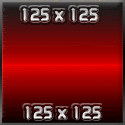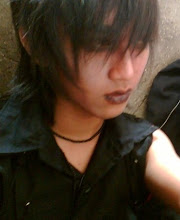New years festival
Day 31 December or New Year's Eve is called omisoka. On New Year's Eve, the Japanese have a tradition of eating soba buckwheat called toshikoshi.
Japanese television stations compete for viewers with a variety of New Year's Eve events. NHK has broadcast the event Kohaku tradition Uta Gassen, a song competition between famous singers who were divided into camps of red and white camp.
Toward 12 o'clock the night, bells in the various Buddhist temples in Japan was rung. The tradition of hitting the bell before the turn of the year called Joya no kane. Bells rung 108 times as a symbol of 108 types of human evil passions that must be driven away.

Visits to the shrine
The days at the beginning of a new year is marked by Hatsumode first visit to the shrine of Shinto and Buddhist religions. In front of the big temples, after the turn of the year already found a crowd of people waiting to open the temple door. The prayer usually delivered in the form of the expectation that a healthy and safe throughout the year.

New years food
Osechi is the designation for the special dish eaten in the new year. Zoni of dashi broth soup containing mochi and vegetables is one Osechi cuisine. A variety of side dishes cooked dishes Osechi days earlier and arranged in tiered wooden box called jubako. Large supermarket a few weeks before the new year also has opened Osechi reservations. Osechi side dishes are usually on very sweet or salty, like: kuromame, tatsukuri (gomame), kombumaki, kamaboko, kurikinton, kazunoko, and datemaki. Food new year is expected to be durable, because the new year holiday cooking is an opportunity for housewives in Japan.
Fish is cooked differently according to their area, in eastern Japan, while the salmon used in western Japan used sunglir fish (buri). Some areas also have a distinctive cuisine that can not be enjoyed elsewhere. Kansai region has a typical dish of dried cod (bodara) cooked with sugar and shoyu.
Closing New Year celebrations are marked by eating porridge cooked with nanakusa seven types of vegetables and grass. Porridge is eaten on 7 or January 15 so that the belly could rest after a new year filled with food.


Mochi
Events pounding mochi (mochitsuki) is one of the new year ahead of tradition. That have been cooked glutinous rice is inserted into the ground with a mortar and pestle. One person assigned to pound, while the other one in charge of turning the hands of glutinous rice that has been moistened with water. Glutinous rice pounded until sticky and form large clumps of white mochi.
Besides eaten as a substitute for rice during the new year, also made mochi decoration new year, called Kagami mochi. Traditionally, Kagami mochi is made by preparing two mochi-sized round, plus an orange on top as a garnish.

New Year Postcards

The Japanese have a tradition of exchanging new year postcards (greeting the new year), which arrived exactly on January 1st. New Year's greeting postcards guaranteed to the address on the date of January 1, provided that they sent does not pass through the specified period of post office receipts. Receipt postcard usually starts mid December until the last few days before closing the year. The post office requires extra staff are recruited from among students, so that all the postcards can be delivered on January 1.
As a tribute to the deceased, family members of the new left and did not celebrate the new year did not send postcards new year. Instead, a new family member affliction hits send postcards can not send notification postcards greeting the new year.


----------------
Otoshidama
The Japanese have a tradition of giving, known as the Red envelope otoshidama (????). While giving otoshidama for children, a number of new paper money or coins are inserted into a small envelope called pochibukuro (otoshidama-bukuro) decorated with a variety of children's favorite picture. Otoshidama highly-awaited children in Japan, especially if you have an uncle or aunt who is generous.

Art
New Year celebrations also enlivened by writing the first kanji for the year. Kanji writing tradition that made January 2, called kakizome (first calligraphy).

Day 31 December or New Year's Eve is called omisoka. On New Year's Eve, the Japanese have a tradition of eating soba buckwheat called toshikoshi.
Japanese television stations compete for viewers with a variety of New Year's Eve events. NHK has broadcast the event Kohaku tradition Uta Gassen, a song competition between famous singers who were divided into camps of red and white camp.
Toward 12 o'clock the night, bells in the various Buddhist temples in Japan was rung. The tradition of hitting the bell before the turn of the year called Joya no kane. Bells rung 108 times as a symbol of 108 types of human evil passions that must be driven away.

Visits to the shrine
The days at the beginning of a new year is marked by Hatsumode first visit to the shrine of Shinto and Buddhist religions. In front of the big temples, after the turn of the year already found a crowd of people waiting to open the temple door. The prayer usually delivered in the form of the expectation that a healthy and safe throughout the year.

New years food
Osechi is the designation for the special dish eaten in the new year. Zoni of dashi broth soup containing mochi and vegetables is one Osechi cuisine. A variety of side dishes cooked dishes Osechi days earlier and arranged in tiered wooden box called jubako. Large supermarket a few weeks before the new year also has opened Osechi reservations. Osechi side dishes are usually on very sweet or salty, like: kuromame, tatsukuri (gomame), kombumaki, kamaboko, kurikinton, kazunoko, and datemaki. Food new year is expected to be durable, because the new year holiday cooking is an opportunity for housewives in Japan.
Fish is cooked differently according to their area, in eastern Japan, while the salmon used in western Japan used sunglir fish (buri). Some areas also have a distinctive cuisine that can not be enjoyed elsewhere. Kansai region has a typical dish of dried cod (bodara) cooked with sugar and shoyu.
Closing New Year celebrations are marked by eating porridge cooked with nanakusa seven types of vegetables and grass. Porridge is eaten on 7 or January 15 so that the belly could rest after a new year filled with food.


Mochi
Events pounding mochi (mochitsuki) is one of the new year ahead of tradition. That have been cooked glutinous rice is inserted into the ground with a mortar and pestle. One person assigned to pound, while the other one in charge of turning the hands of glutinous rice that has been moistened with water. Glutinous rice pounded until sticky and form large clumps of white mochi.
Besides eaten as a substitute for rice during the new year, also made mochi decoration new year, called Kagami mochi. Traditionally, Kagami mochi is made by preparing two mochi-sized round, plus an orange on top as a garnish.

New Year Postcards

The Japanese have a tradition of exchanging new year postcards (greeting the new year), which arrived exactly on January 1st. New Year's greeting postcards guaranteed to the address on the date of January 1, provided that they sent does not pass through the specified period of post office receipts. Receipt postcard usually starts mid December until the last few days before closing the year. The post office requires extra staff are recruited from among students, so that all the postcards can be delivered on January 1.
As a tribute to the deceased, family members of the new left and did not celebrate the new year did not send postcards new year. Instead, a new family member affliction hits send postcards can not send notification postcards greeting the new year.


----------------
Otoshidama
The Japanese have a tradition of giving, known as the Red envelope otoshidama (????). While giving otoshidama for children, a number of new paper money or coins are inserted into a small envelope called pochibukuro (otoshidama-bukuro) decorated with a variety of children's favorite picture. Otoshidama highly-awaited children in Japan, especially if you have an uncle or aunt who is generous.

Art
New Year celebrations also enlivened by writing the first kanji for the year. Kanji writing tradition that made January 2, called kakizome (first calligraphy).









0 Response to "New Year Japan Festival"